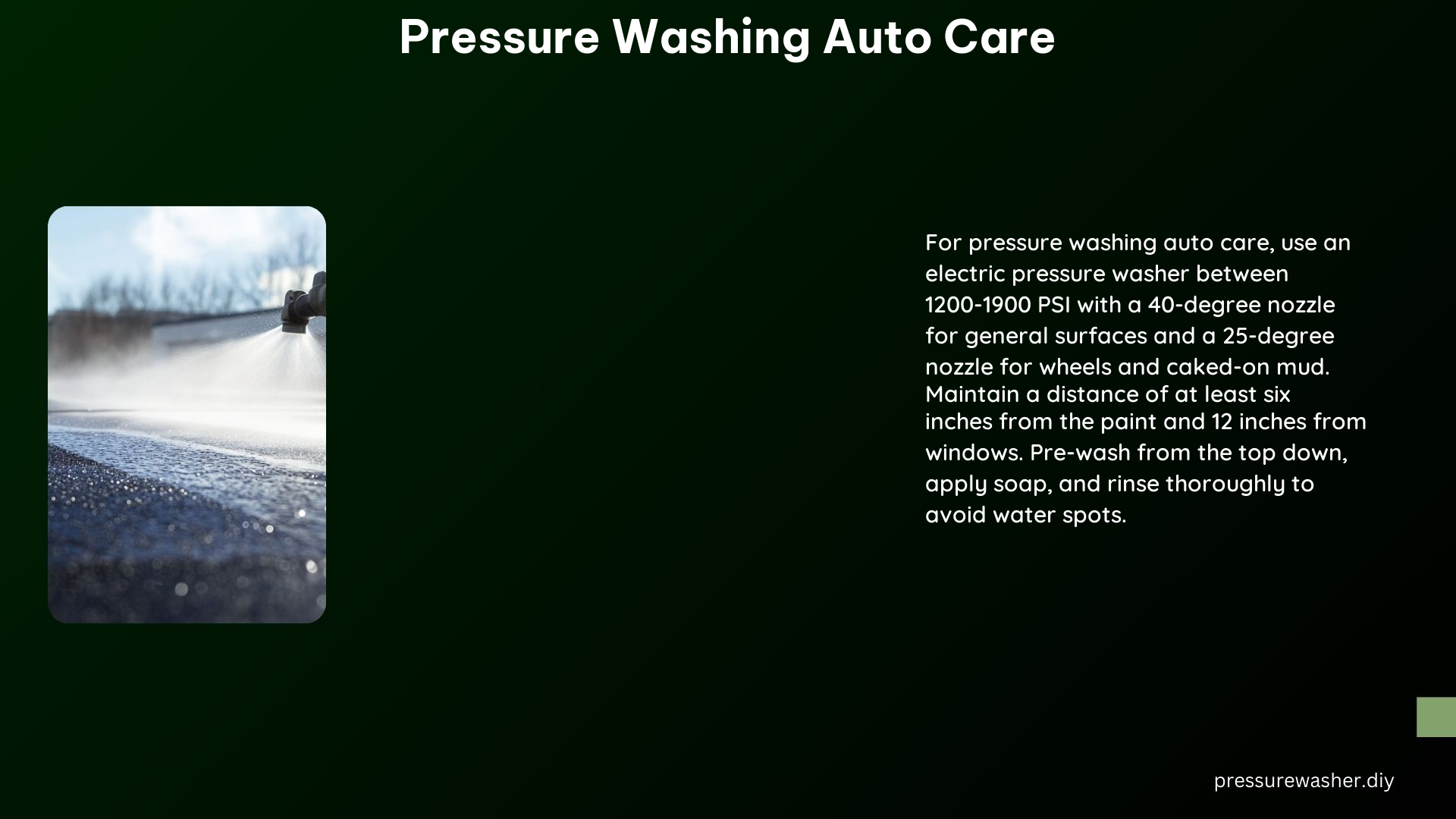Pressure washing is a powerful and efficient way to clean your car, but it requires careful consideration to avoid damaging the delicate surfaces. This comprehensive guide will provide you with the technical specifications, safety precautions, and step-by-step instructions for pressure washing your vehicle like a pro.
PSI (Pounds per Square Inch) Safety
The key to successful and safe pressure washing of your car lies in the appropriate selection of the pressure washer’s PSI. Using a pressure washer with a PSI that is too high can lead to serious damage to your car’s paint, trim, and other components. For optimal results, it is recommended to use an electric pressure washer with a PSI range between 1,200 and 1,900.
| PSI Range | Recommended Use |
|---|---|
| 1,200 – 1,900 | Ideal for car washing |
| 3,100+ | Too powerful and can cause damage |
When it comes to the nozzle tips, a 25-degree tip is best suited for cleaning the wheels and wheel wells, while a 40-degree tip is the ideal choice for the rest of the car’s surfaces. This wider spray pattern helps to distribute the water pressure more evenly, reducing the risk of concentrated damage.
Precautions to Prevent Damage

Proper preparation and precautionary measures are crucial to ensure that your car’s finish remains unharmed during the pressure washing process. Here are some key steps to follow:
- Surface Selection: Park your car on a concrete or blacktop surface to avoid kicking up stones that could potentially scratch the paint or crack the windows.
- Window Protection: Ensure that all windows are rolled up before starting the pressure wash to prevent water from entering the interior.
- Grille Angle: Avoid spraying directly into the front grille, as this can damage the radiator. Instead, spray at a 45-degree angle to minimize the impact.
- Nozzle Distance: Keep the nozzle at a safe distance of 6-8 inches from the car’s surface to reduce the risk of damage.
- Nozzle Type: Use a fan-shaped nozzle for a wider, more gentle spray, and avoid pinpoint nozzles that can cause concentrated damage.
Ideal GPM (Gallons per Minute)
The ideal GPM (Gallons per Minute) for pressure washing a car is not strictly specified, as it can vary depending on the specific pressure washer model and the desired cleaning intensity. However, it is generally recommended to use a pressure washer with adjustable pressure settings to ensure the right amount of water pressure for the task at hand.
Additional Tips
To further enhance the effectiveness and safety of your pressure washing routine, consider the following additional tips:
- Detergent Selection: Use a gentle, car-specific detergent to avoid damaging the paint and body of the car.
- Washing Sequence: Start at the top of the car and work your way down to avoid pushing dirt and debris onto clean areas.
- Soap Application: Use a soap tank or apply the soap by hand with a rag or sponge, and let it sit for at least five minutes before rinsing.
- Rinsing and Drying: Rinse the car thoroughly, and dry it with a hand towel, soft cloth, or chamois to prevent water spots.
Technical Specifications
Pressure Washer Types
For car washing, electric pressure washers are the recommended choice due to their lower PSI and more controlled pressure, which helps to minimize the risk of damage to the vehicle’s surfaces.
Nozzle Tips
- 25-degree tip: Ideal for cleaning wheels and wheel wells
- 40-degree tip: Suitable for the rest of the car’s surfaces
Distance and Angle
When pressure washing your car, it is crucial to maintain a safe distance of 6-8 inches from the surface and spray at a 45-degree angle to avoid direct impact and potential damage.
DIY Pressure Washing
To pressure wash your car at home, you’ll need the following equipment:
- Electric pressure washer
- 25-degree and 40-degree nozzle tips
- Soap tank or soap solution
- Hand towel, soft cloth, or chamois for drying
Follow these step-by-step instructions for a successful DIY pressure washing experience:
- Pre-wash the car to remove any loose debris.
- Apply the soap using a soap tank or by hand.
- Let the soap sit for at least five minutes.
- Rinse the car thoroughly with the 40-degree nozzle tip.
- Dry the car with a hand towel, soft cloth, or chamois to prevent water spots.
Remember, proper technique and caution are essential to ensure the longevity and pristine condition of your car’s finish. By following the guidelines outlined in this comprehensive guide, you can safely and effectively pressure wash your vehicle at home.
